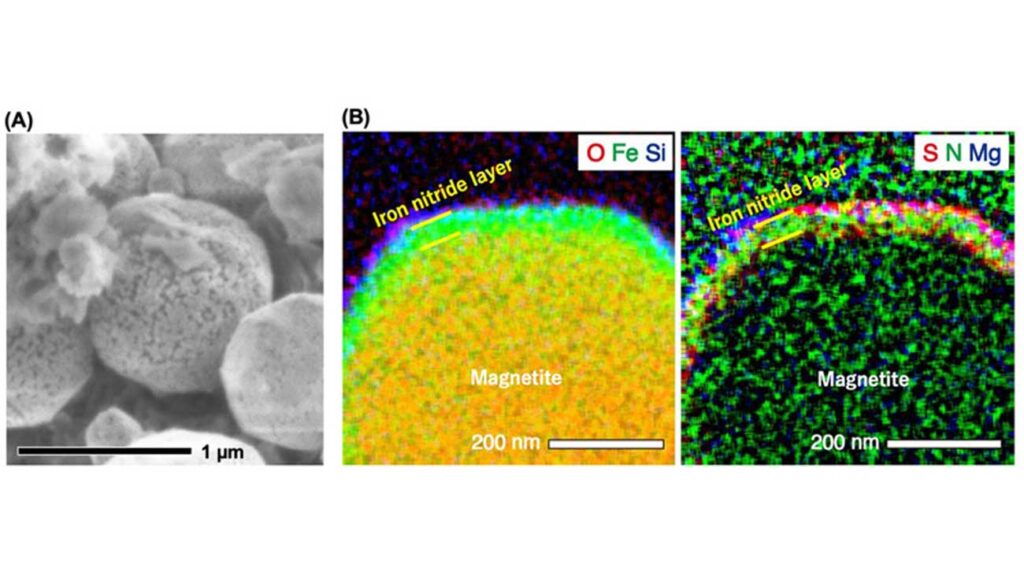Ammonium salts and other nitrogen compounds are commonly found in materials produced far from the sun, but nothing is known about how they get into Earth’s orbit.
Nitrogen may have been brought to the near-Earth region of the early solar system by micrometeorites originating from frozen planets in the outer solar system, according to a new study by an international team.
The results indicate that more nitrogen molecules are transported closer to Earth than previously thought, possibly serving as a building block for life on Earth.
By analyzing samples of Ryugu for signs of space weathering, researchers hope to uncover hints about what is currently entering Earth’s orbit. Using an electron microscope, they discovered that the surface of the Ryugu sample was covered with small minerals (iron nitride: Fe4N) consisting of iron and nitrogen.
Toru Matsumoto, lead author of the study and assistant professor at Kyoto University, said: Said,”We hypothesized that a small meteorite called a micrometeorite containing ammonia compounds may have come from an icy body and collided with Ryugu. Micrometeorite impacts cause chemical reactions on magnetite, leading to the formation of iron nitride. ”
Iron nitride, which is composed of iron and oxygen atoms, was found on the surface of magnetite. When magnetite is exposed to the space environment, oxygen atoms are removed from the surface of the magnetite due to the effects of hydrogen ions from the sun, the solar wind, and the heating of micrometeorites. These steps produce metallic iron on the surface of the magnetite, which under the right conditions easily combines with ammonia to form iron nitride.
Reference magazines:
- Tetsuya Matsumoto, Tetsuya Noguchi, Akira Miyake et al. An influx of nitrogen-rich material from the outer Solar System is indicated by iron nitrides in Ryugu samples. Nat Astron (2023). Doi: 10.1038/s41550-023-02137-z

